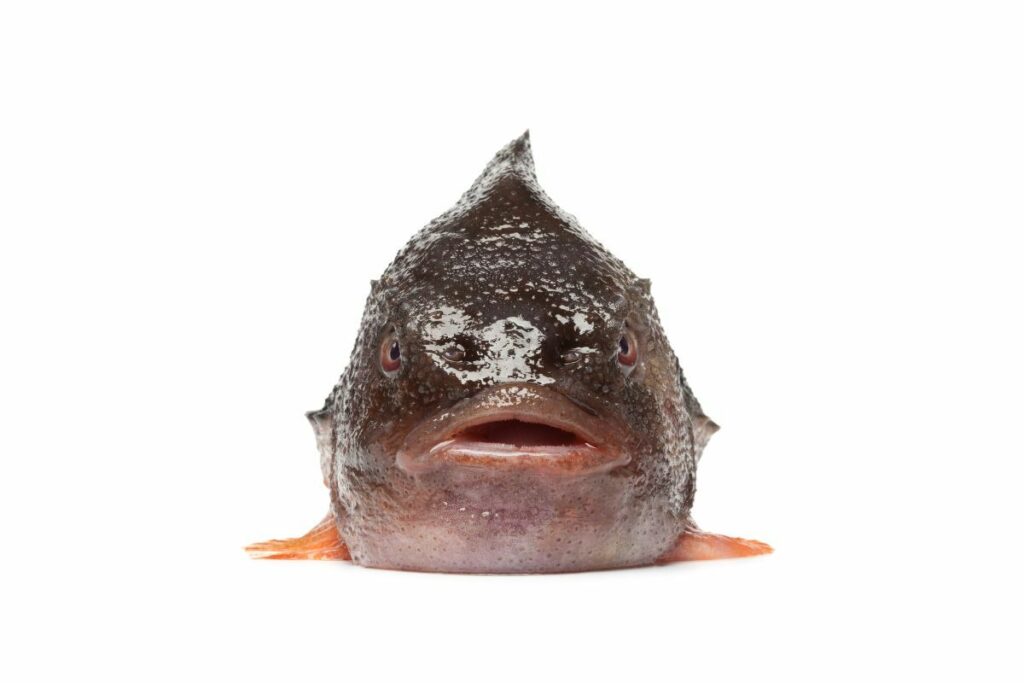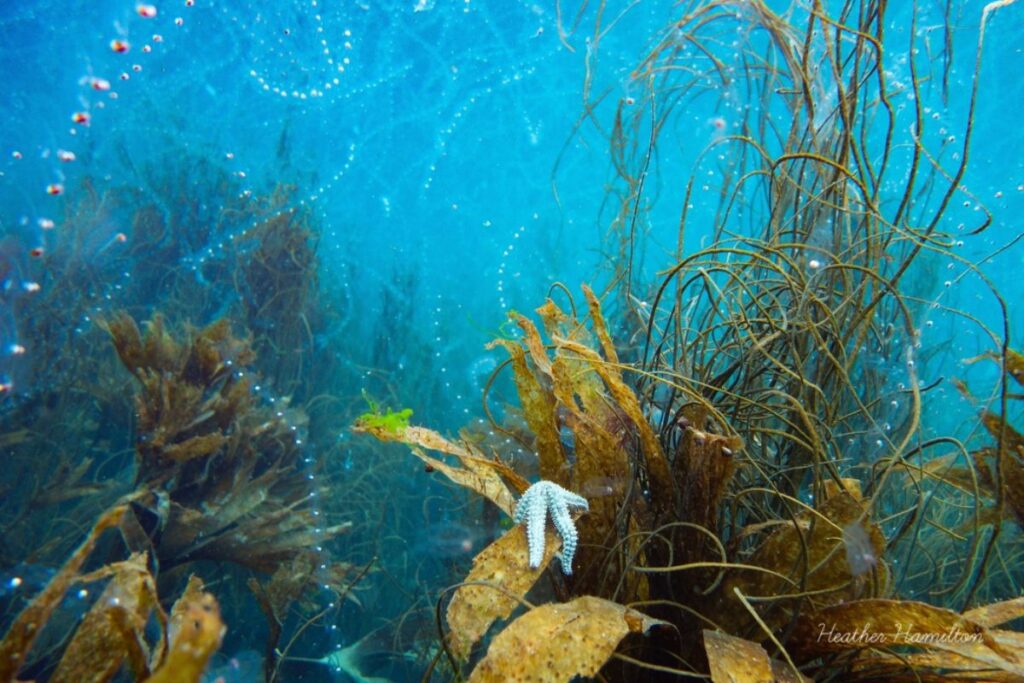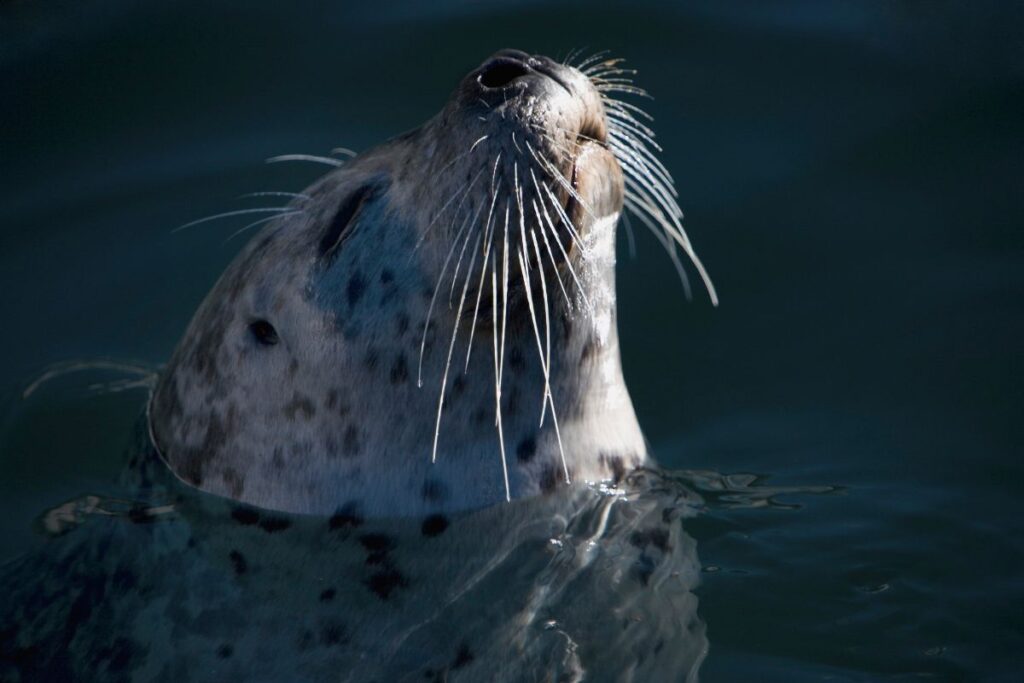Now that we have reached the end of our busiest time of year, we can sit back and take a look at the wildlife sightings we were lucky enough to encounter this season. From April to the end of September, we were fortunate to see a myriad of different marine species. Some of which we saw much more often than we have in previous seasons! Without further ado, let’s delve into the marine wildlife spotted around Padstow Bay this season
Species sighted
Puffins:
Puffins? Yes, puffins! Atlantic puffins can be spotted in a select few locations across the south west of England. Off Padstow, we are extremely fortunate to see a breeding colony of puffins that return annually to an offshore island. We tend to spot the first few puffins arriving on the island in late March, with the height of the breeding season occurring in June.
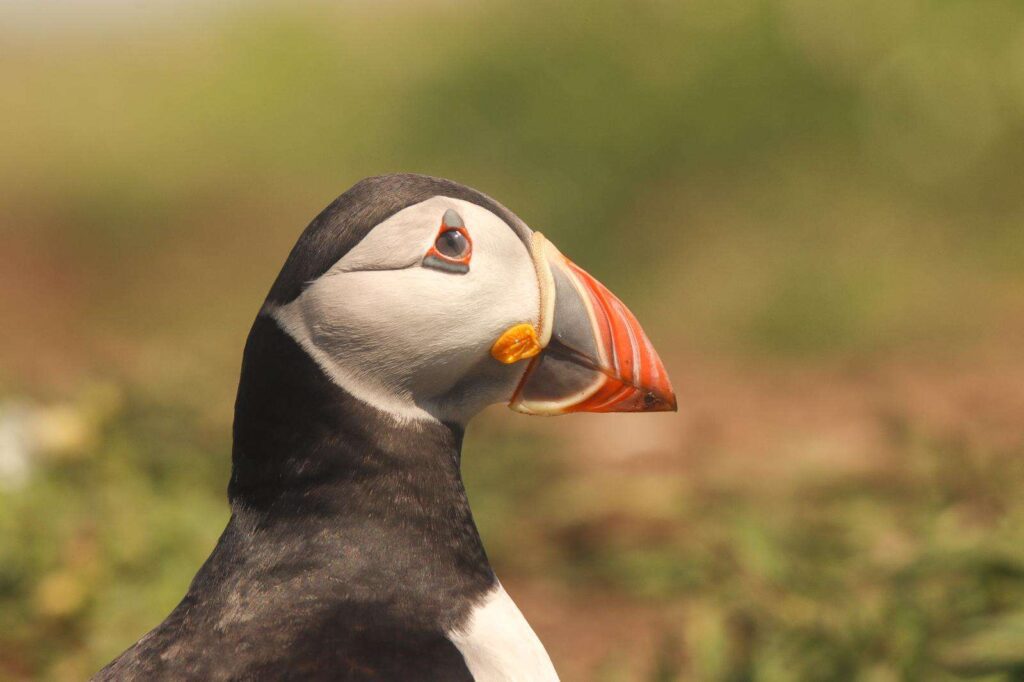
This is when we see the most activity around the island, with puffins leaving the island to catch sand eels and returning to feed their pufflings. This breeding season, we noticed a peak in puffin sightings in June, with May not that far behind. Sightings dropped off in mid July, after the pufflings fledged. This season we focused on collecting data on puffin numbers and behaviour, to compare with data we will collect going forward. As our climate changes, it is predicted that the UK’s puffin population could decline by as much as 90% by 2050, showing the importance of understanding the small population off Padstow.
Common dolphins:
Common dolphins, as the name would suggest, are the most common species of dolphin found in UK waters. With an unmistakable hourglass shape down the side of their body, they are easily recognisable and can be spotted around Cornwall year-round. This season, we noticed the greatest number of dolphins spotted in July, with a period of approximately four weeks from 13th July to 12th August where common dolphins were spotted every single day! This increase in individuals is likely driven by the abundance of fish in the bay during the summer, providing ample feeding opportunities.
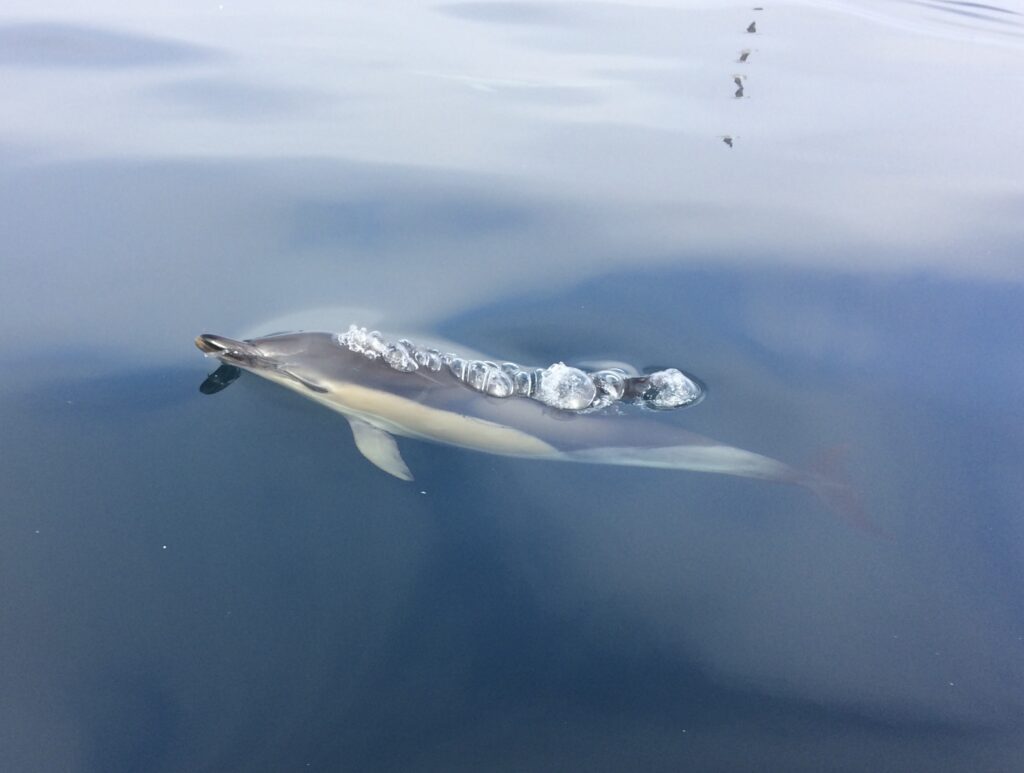
Grey seals:
The larger of the two species of seal found around the UK, grey seals are a regular, but always thrilling sight around Padstow Bay. The offshore islands dotted along the bay provide the seals with an opportunity to haul out, rest, and digest. While sheltered coves along the coastline can protect seals from the wild Atlantic. Grey seals are by far the most commonly spotted marine mammal species on our boat trips, with sightings occurring on 94% of days we ran trips during the peak season.
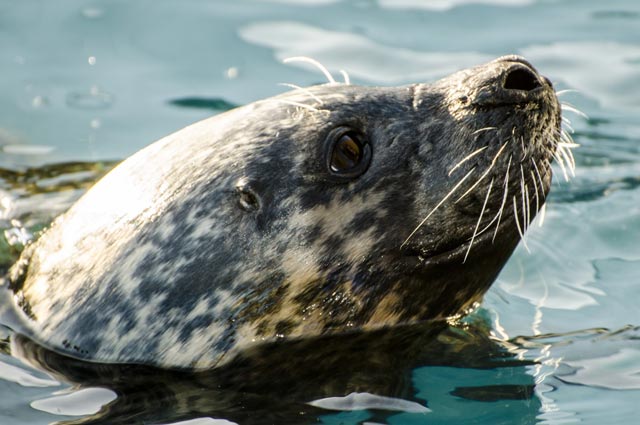
Harbour porpoises:
Often mistaken for dolphins, harbour porpoises are the most common and widespread cetacean species in UK waters. Harbour porpoises are renowned for being tricky to spot, because of their shorter dorsal fin, smaller body size, and sensitivity to noise in the water. Over our peak summer season, harbour porpoise sightings were few and far between.
This is likely due to an increased number of boats using Padstow Bay. In previous years, we have noted a peak in harbour porpoise sightings during the winter months. Padstow Bay is part of ‘The Bristol Channel Approaches SAC (Special Area of Conservation)’, which has been identified as a winter area of importance for harbour porpoises. Therefore it is likely that we will see an increase in harbour porpoise sightings as we progress through the winter
Minke whale:
Minke whales are the smallest of the rorqual whale species and the smallest whale species found in UK waters. That being said, they can reach lengths of seven to nine metres! This season, minke whale sightings peaked towards the end of June and beginning of July. The likely cause of this is seasonal migrations, which are still poorly understood. It is thought that minke whales perform seasonal migrations between coastal, summer, feeding grounds in high latitudes, and offshore, winter, breeding grounds in low latitudes.
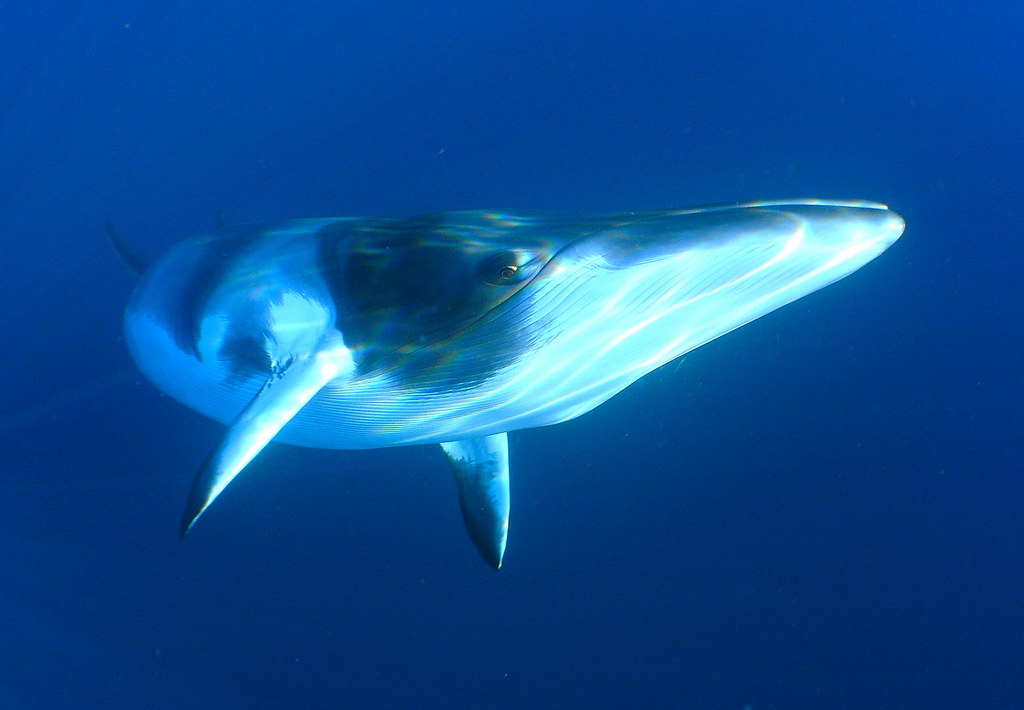
Sunfish:
Ocean sunfish are a peculiar looking species. A large, flat, circular fish, with a tall dorsal and anal fin, and two tiny pectoral fins. Sunfish use a rudder-like fringe of skin known as a clavus, to navigate their way through the water. Often spotted resting on their side at the water’s surface, sunfish regulate their body temperature basking in the sunshine, after surfacing from deep dives.
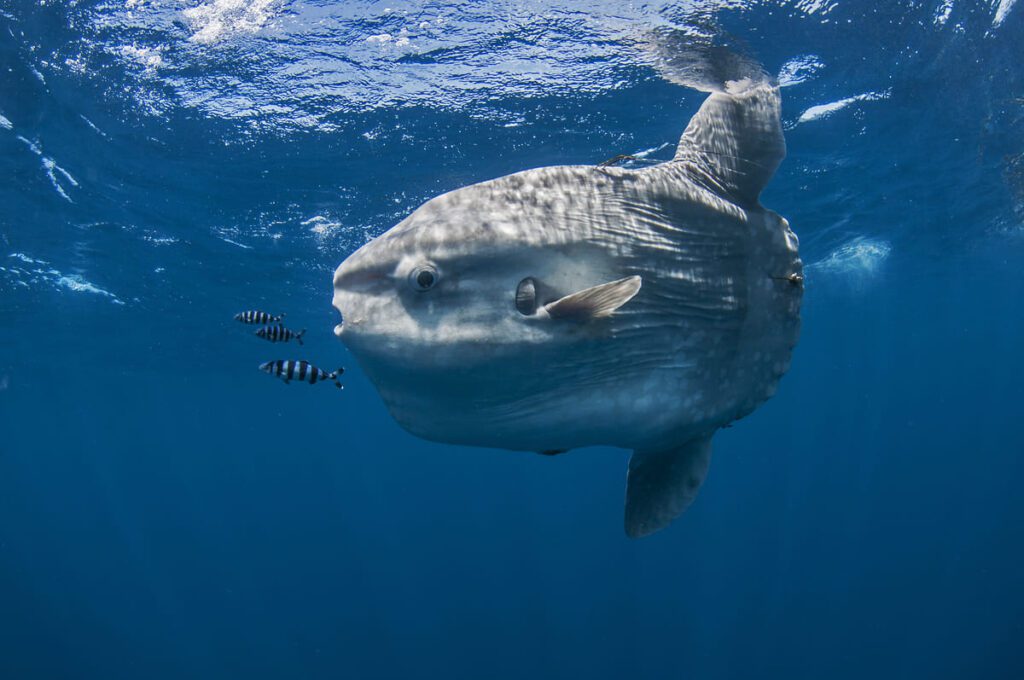
This season, sunfish sightings peaked in August with a period between 4th and 16th August where sunfish were spotted every day! This peak coincides with sunfish visiting the UK coastline in the summer to feast on jellyfish. Sunfish were often spotted in shallow, coastal waters, close to islands, or at the mouth of the Camel Estuary.
Bluefin tuna:
A once common sight in UK waters, bluefin tuna were fished almost to the point of extinction in the 1960’s. This was due to poor management of fisheries. Until recently bluefin tuna sightings were rare. In 2021, the International Union for the Conservation of Nature (IUCN) changed the conservation status of bluefin tuna from “endangered” to “least concern” resulting in the UK holding its own tightly regulated quota, and a trial commercial fishery.
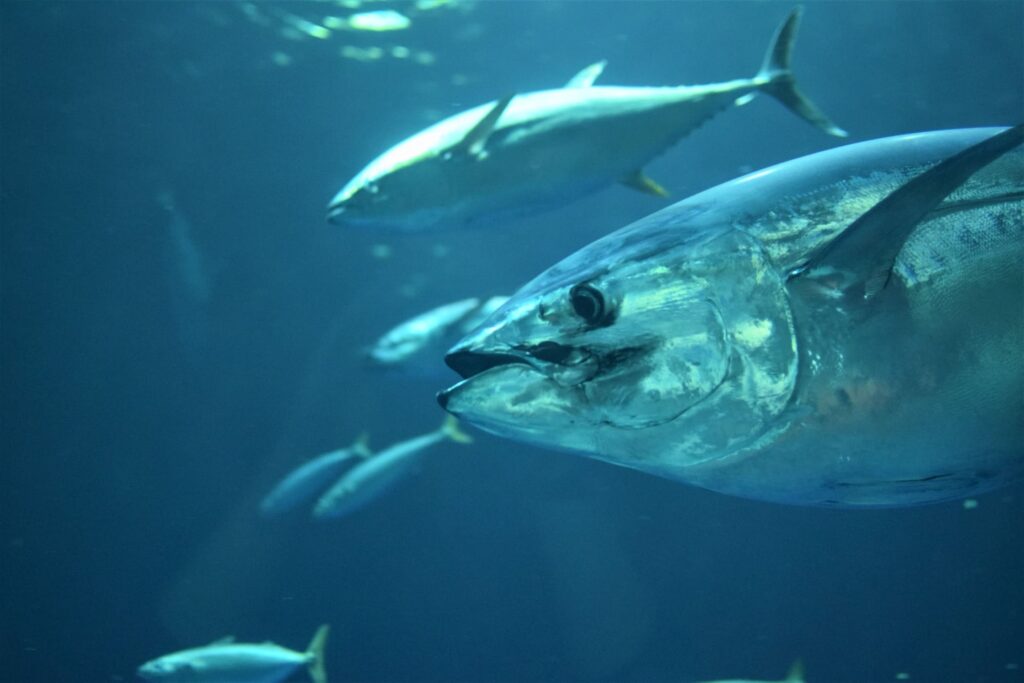
A peak in bluefin tuna sightings occurred from late July until the end of September, between 30 and 45 metres depth – though we still spotted tuna throughout October. This season we noted an increase in the estimated total number of bluefin tuna spotted, from ~175 in 2023, to ~200 in 2024. This increase, although small, suggests that the population is bouncing back from historical exploitation. However, with the recent change in conservation status, it shows the need for caution to prevent population decline
Bottlenose dolphins:
Found in both temperate and tropical waters, bottlenose dolphins are a regular sight in many parts of the world. Though around the Cornish coastline, bottlenose dolphins are one of the lesser seen dolphin species. Bottlenose dolphins are divided into two genetically distinct ecotypes of coastal and offshore. Offshore bottlenose dolphins tend to form large pods, and as the name suggests, spend the majority of time further from the coast. Whereas coastal bottlenose dolphins spend more time in the shallow waters of estuaries and bays.
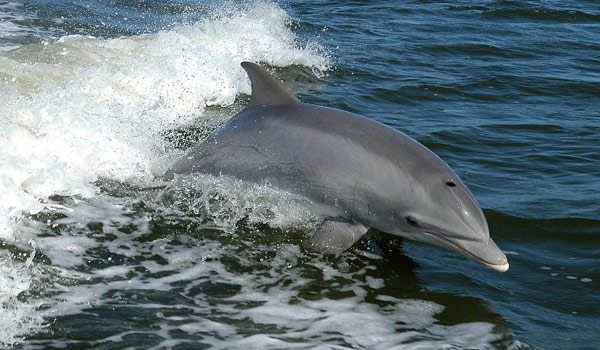
This season, we were lucky enough to spot members of the south coast inshore pod on three occasions, and a large pod of approximately 100 offshore dolphins on one occasion. These were particularly exciting sightings for us, as we only tend to see offshore individuals when they come closer to the coast to feed. Equally, the south coast inshore pod is made up of approximately 40 individuals that range from Kent to the north Cornish coast. Living closer to the land and humans unfortunately means that the pod has a higher risk of being subject to disturbance due to a lack of statutory protection.
Risso’s dolphins:
Risso’s dolphins are stocky in their body shape, with large, blunt heads. Easily recognisable because of their colouring, Risso’s dolphins start off grey, then appear white with age from scarring. This scarring is often due to teeth marks from other individuals when socialising, mating, and feeding.
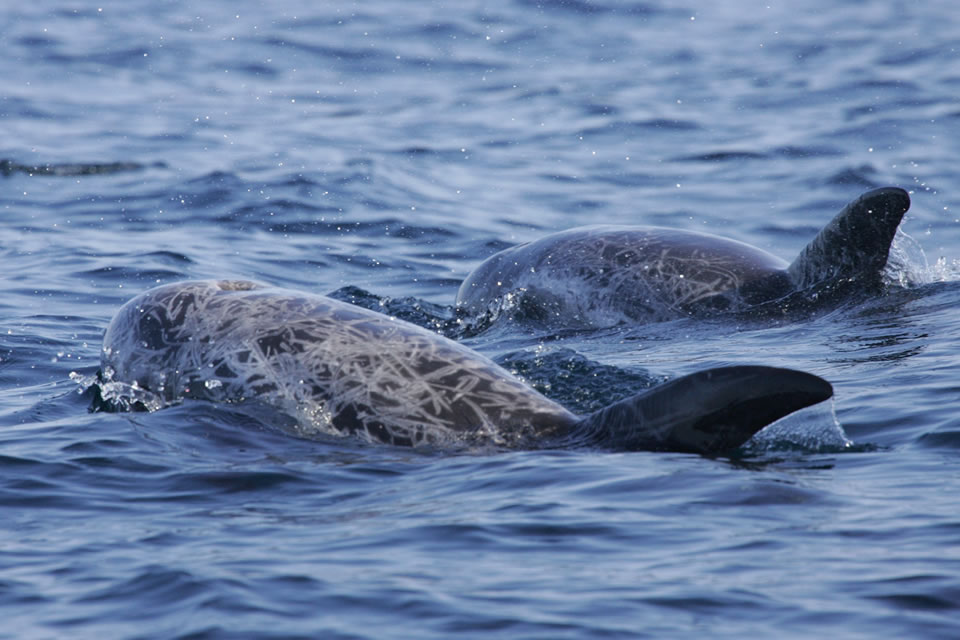
Often found in deep water, Risso’s dolphins prefer tropical and warm temperate waters, so migrate north in the summer. This season, we were lucky enough to spot Risso’s dolphins on eight occasions, from May to the end of August. This coincides with warmer water temperatures, and the presence of cephalopods such as octopus, cuttlefish and small squid to feed on.
Jellies:
Around Cornwall, we can see a variety of different jellyfish species including compass, barrel, moon, blue, and mauve stinger. Jellyfish are most frequently spotted during the summer months, due to warmer water temperatures. This correlates with our sightings over the peak season, with jellyfish sightings occurring between June and the end of August.
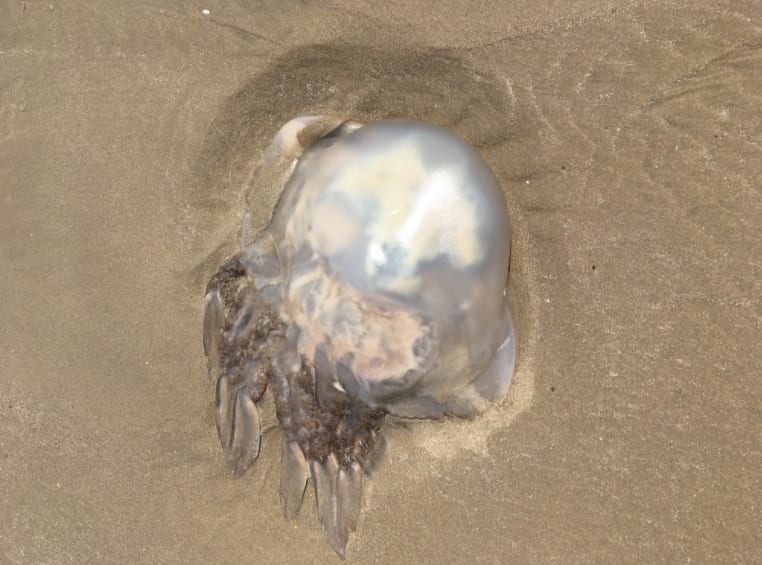
This season we also saw blooms of mauve stinger jellyfish close to land. This is an unusual sighting as mauve stingers are only found in coastal waters when ocean currents and weather bring them inshore. Unlike many other species, in the face of climate change and increasing water temperatures, jellyfish are said to be thriving. This is because jellyfish can tolerate ocean acidification, where the ocean’s pH is lowered and its acidity is increased.
Other seabirds:
Along with puffins, different seabird species are spotted around Padstow Bay depending on the season. Some species are seen throughout the year, such as gulls, european shags, cormorants, and fulmar. Others are present for most of the year, such as kittiwakes and gannets. Whereas species like guillemots, razorbills, storm petrels, and manx shearwater are only seen during their spring breeding seasons, and occasionally offshore later in the year.
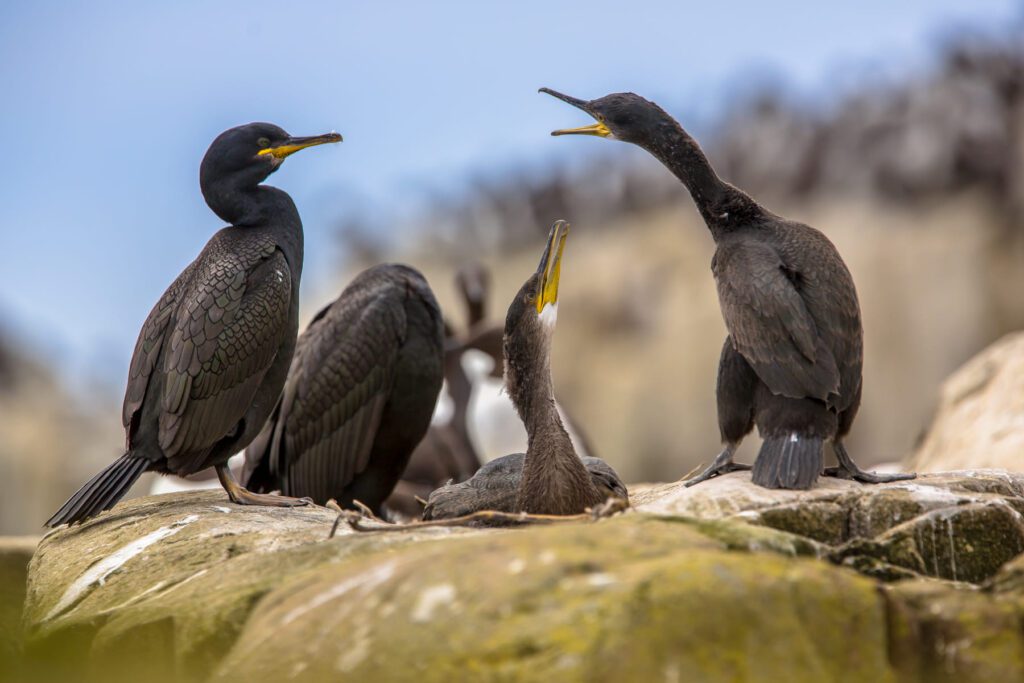
Not just a wildlife watching company
Helping inform conservation efforts and educating our passengers is of the utmost importance to us. We recognise that spending a great amount of time at sea means we can collect vast amounts of data, which would otherwise be difficult to obtain. Not only do we engage our passengers with interesting facts about wildlife around Padstow Bay, we also inform passengers of the threats faced by wildlife, and any conservation management strategies in place to mitigate them.
Why we collect data and what we do with it
We record all wildlife sightings from our trips and send them to the Environmental Records Centre for Cornwall and the Isles of Scilly (ERCCIS) at Cornwall Wildlife Trust. These records are then shared with the Seawatch Foundation, contributing to conservation research. Additionally, we collect data that is specific to independent research projects in the pipeline. Collecting this data not only monitors wildlife populations, but also helps to inform policymakers regarding protective management.
Conclusion
The 2024 peak season saw a variety of wonderful marine species in Padstow Bay. From the vibrant hues of jellyfish to the impressive blow of a minke whale, this season provided us with some truly wonderful wildlife encounters. The variety of species present can be used to indicate the biodiversity of Padstow Bay and its surrounding areas. Going forward, we hope that wildlife can continue to thrive in the bay, and we will be lucky enough to see these wonderful creatures long into the future.
